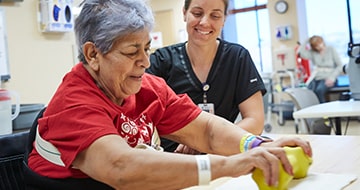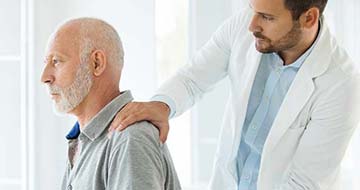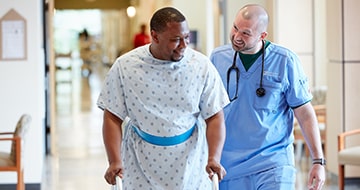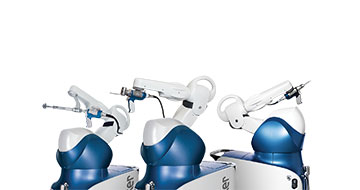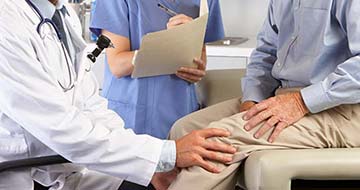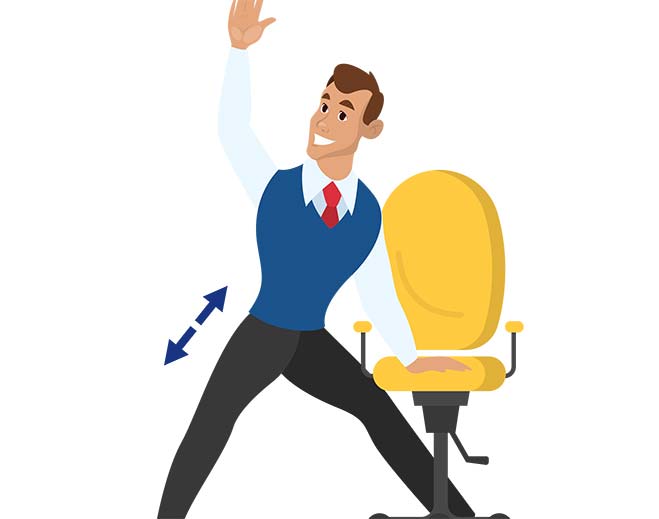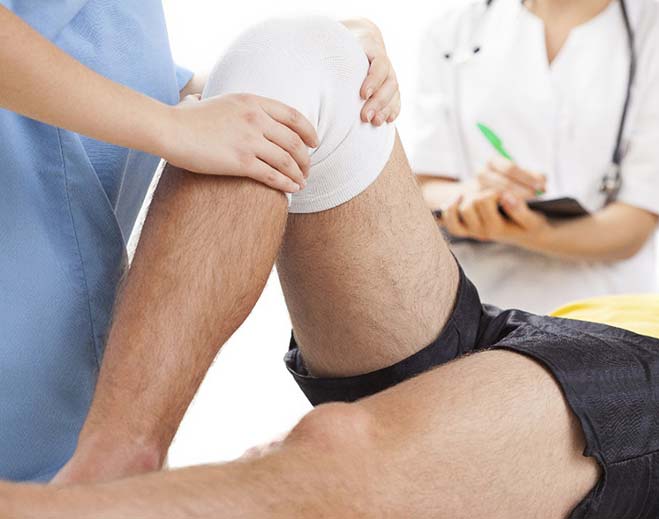Imagine life without pain.
The Hospitals of Providence (THOP) in El Paso, Texas is your destination for joint care and sports medicine with a full continuum of care including diagnosis, treatment, surgery and rehabilitation.
When you choose The Hospitals of Providence, you benefit from the following:
- High-quality orthopedic care for your back, spine, knee, hip and other ailing joints
- Minimally invasive surgical procedures like MAKO® robotic-assisted surgery and NAVIO™, which may result in less scarring and pain and faster recovery times
- A comprehensive orthopedic rehabilitation program to help you rebuild and recover
We offer some of the most advanced technologies and techniques in the industry so we can provide safe and compassionate orthopedic care and services to people in El Paso and surrounding areas. We offer a wide range of treatments and procedures to help
with all your symptoms, from nonsurgical options to the minimally invasive procedures that can result in less scarring, less pain and faster recovery.
Award-Winning Treatment
The Hospitals of Providence Sierra Campus proudly achieved the Joint Commission Certification in Total Hip Replacement and Total Knee Replacement, continuing the specialization and quality care in complete treatment of orthopedic patients. Additionally,
as a Mako Center of Excellence, Sierra Campus is dedicated to quality and innovative care and was selected as one of the first programs in the country to offer the Mako total knee replacement surgery during the initial limited release.
What Is Orthopedics?
Orthopedics, also called orthopedic surgery, is a medical specialty that deals with the treatment of a range of conditions that affect the musculoskeletal system.
The musculoskeletal system includes the bones, joints, ligaments, tendons and muscles.
An orthopedist is a professional that specializes in orthopedics. Orthopedists make use of and combine the techniques of physical medicine and rehabilitation and
occupational therapy with those of traditional medicine and surgery to treat a variety of musculoskeletal issues ranging from sports injuries to joint pain to back problems. An orthopedist may also choose to specialize in a particular branch of orthopedic
medicine or subspecialty.
Some orthopedic subspecialties include the following:
- Hand and upper extremity
- Foot and ankle
- Musculoskeletal oncology (tumor)
- Pediatric orthopedics
- Sports medicine
- Spine surgery
- Trauma surgery
- Joint replacement surgery
An orthopedist usually works with a team that may include physician assistants, nurse practitioners, occupational and physical therapists and athletic trainers.
Conditions that an Orthopedist Treats
Some of the most common bone and joint conditions that an orthopedist may treat are the following:
- Fractures – breaks in the bone
- Nonunions – failure of fractures to heal
- Malunions – fractures that heal in a wrong position
- Osteoporosis – a healthy bone looks like a honeycomb when viewed under a microscope. When osteoporosis occurs, the size of these holes and spaces are much larger, causing the bone to lose strength and density and grow thinner
- Congenital bone diseases – bone conditions that are evident at, or soon after, birth, mostly caused by factors during pregnancy, delivery or early infancy
- Carpal tunnel syndrome – condition that occurs when the median nerve, which runs from the forearm into the palm of the hand, becomes compressed as it passes through an opening from the wrist to the hand. This narrow and rigid passageway of ligament
and bones at the base of the hand is called the carpal tunnel. Pain and numbness occur when the lining of irritated tendons or other swelling narrows the tunnel and compresses the median nerve
- Rheumatoid arthritis – autoimmune disease that causes pain, swelling, stiffness and loss of functions in the joints. It can also affect the eyes, mouth and lungs
- Lupus – autoimmune disease that attacks healthy tissues and affects the skin, joints, kidneys, brain and other organs
- Bursitis – inflammation of the cushioning pads around joints
- Chondromalacia patellae – breakdown of the cartilage in the kneecap
- Gout – common and painful form of arthritis that happens when uric acid builds up in the body. It occurs when the uric acid turns into needle-like crystals and deposits in the joint
- Osteoarthritis – the most common form of arthritis that is often related to aging and most frequently occurs in the hands, hips and knees
- Osteomyelitis – bone infection caused by bacteria but can also be caused by fungi or other germs
- Septic arthritis – condition that develops when bacteria or microorganisms spread through the blood to a joint
- Tendinitis – inflammation of the tendon
- Strains or sprains – injury to the ligaments around a joint due to overstretching
Diagnosis and Treatment
The orthopedist may ask you about your symptoms and perform a physical examination to assess your condition. Additional diagnostic tests may also be requested including the following:
- X-rays
- Bone scans
- Computed tomography (CT) scan
- Magnetic resonance imaging (MRI) scan
- Arthrogram (joint X-ray)
- Ultrasound
- Nerve conduction studies
- Blood tests
Sometimes, if an in-office procedure such as an X-ray is not available for your condition, an orthopedist may discuss other various treatment options. For example, chronic musculoskeletal disorders such as back pain or arthritis may involve injecting corticosteroid or other types of injections in painful areas like the joints, tendons, ligaments or around the spine. The orthopedist may also recommend one or more of the following treatments:
- Over-the-counter anti-inflammatory medications
- Rehabilitation and physical therapy
- Home exercise programs
- Acupuncture
- Mobility aids
- Surgery
The first step to treating joint pain is knowing where
you are on your journey. Speak with one of our orthopedic specialists to learn
more about your condition and treatment options.


